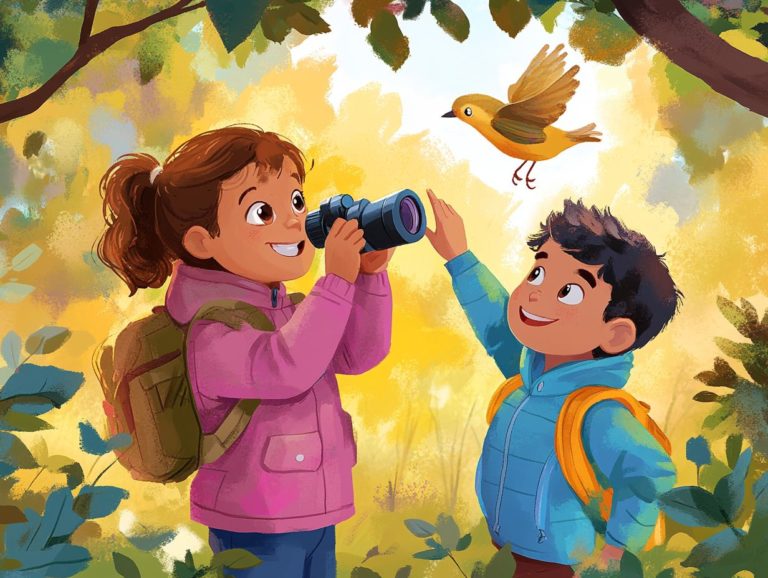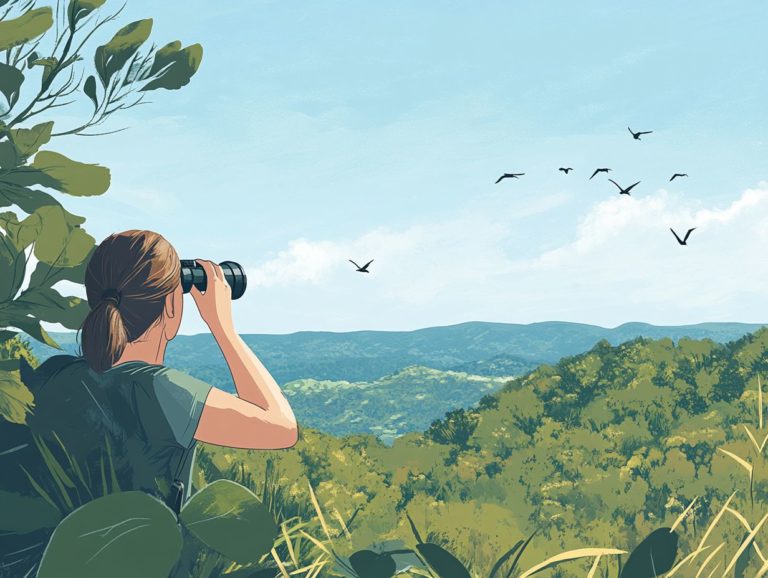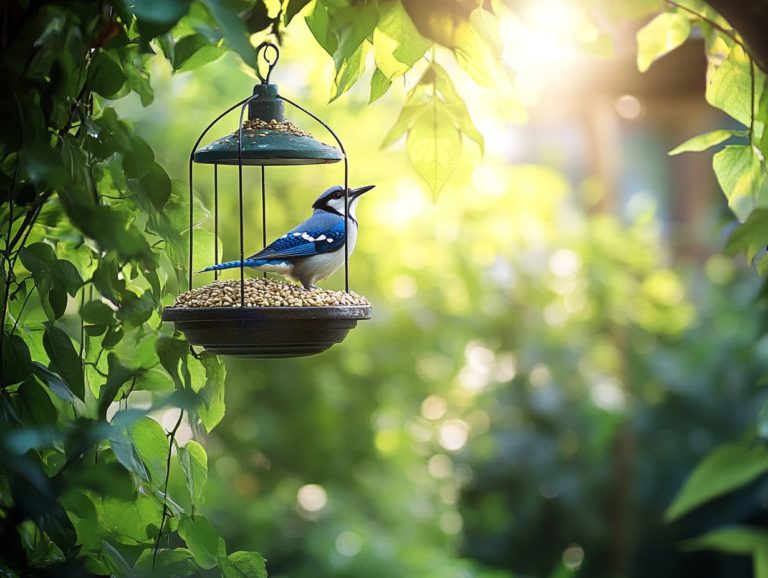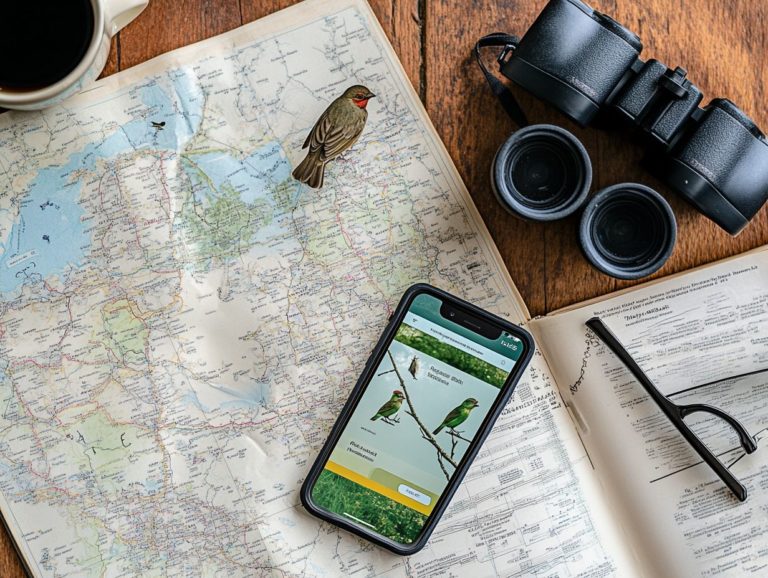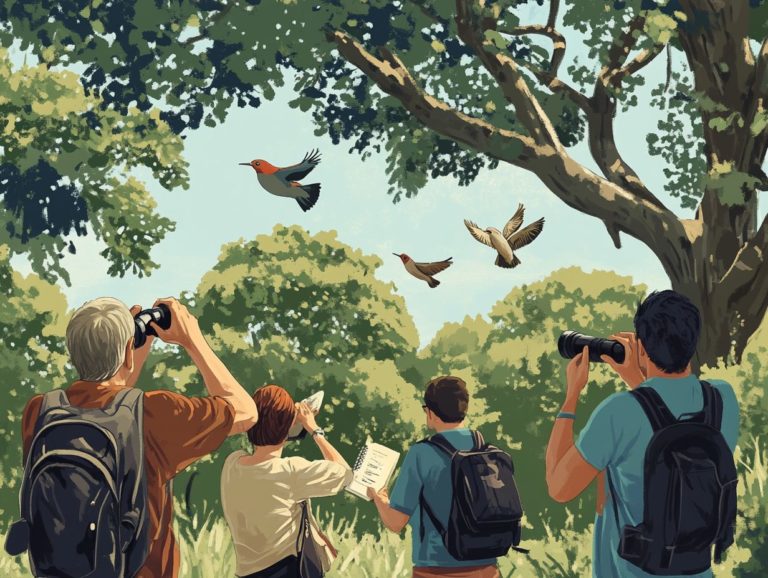What Birds Can I Expect to See This Season?
Birdwatching opens up a fascinating view into the lives of our feathered friends, evolving beautifully with each passing season.
Every season showcases unique migration patterns and a diverse array of species waiting to be observed. From the dazzling birds of spring to the resilient survivors of winter, this guide will help you discover common birds throughout the year.
Explore what to observe in each season and enhance your birdwatching experience, regardless of your location.
Contents
- Key Takeaways:
- Birdwatching in Different Seasons
- Common Birds in Spring
- Common Birds in Summer
- Common Birds in Fall
- Common Birds in Winter
- Frequently Asked Questions
- What Birds Can I Expect to See This Season?
- What Types of Birds Are Common to See During This Season?
- Where Is the Best Place to Go Birdwatching During This Season?
- Are There Any Rare or Unique Birds I Can Expect to See This Season?
- How Can I Attract More Birds to My Backyard During This Season?
- Do Bird Populations Change During This Season?
Key Takeaways:
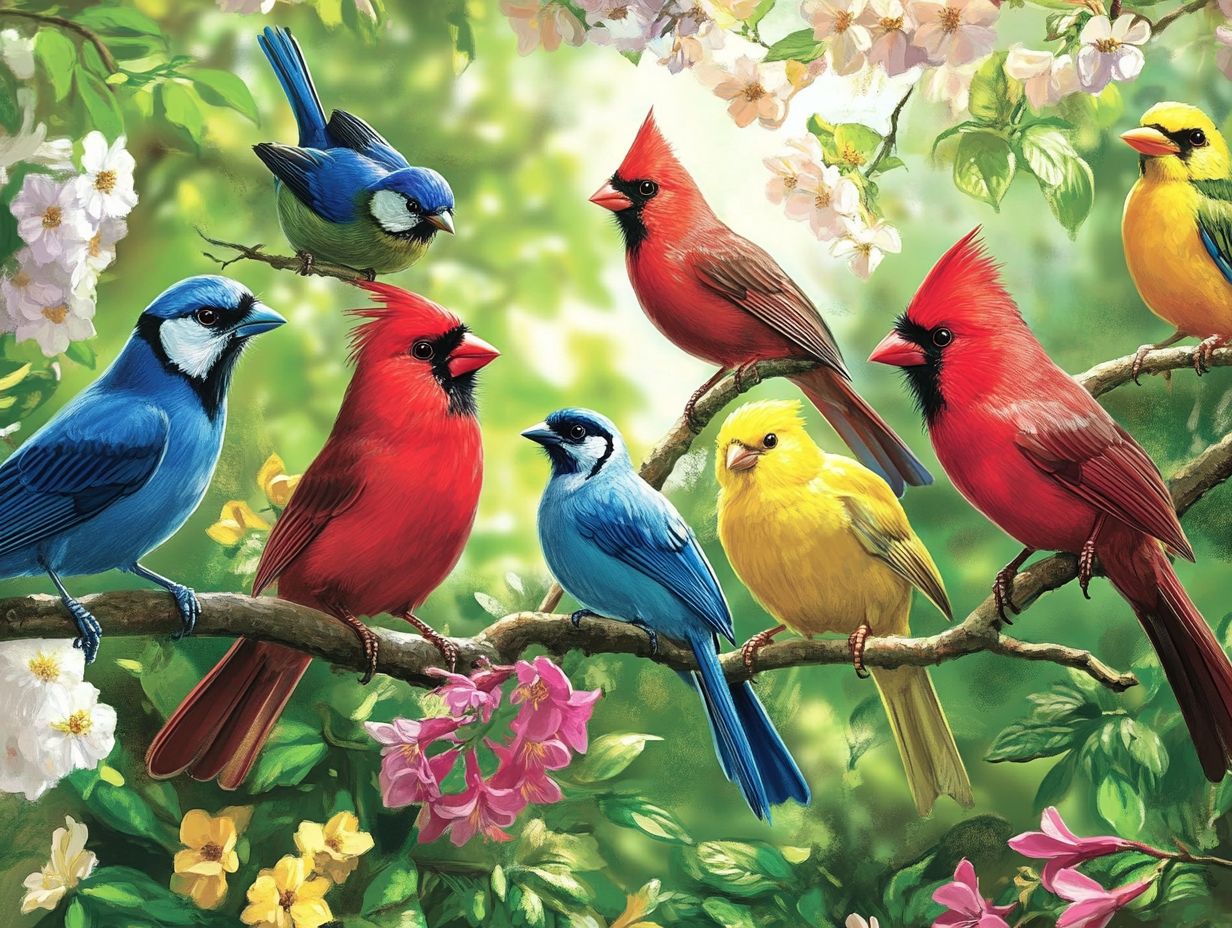
- Spring brings a variety of bird species, including colorful warblers and majestic raptors, as they migrate back from their winter homes. Keep an eye out for these beautiful birds during your birdwatching adventures this season.
- Summer is a great time to spot waterbirds and songbirds, such as herons and thrushes, as they settle in their breeding territories. Listen for their unique songs and calls while you’re out birdwatching.
- When the weather cools, many birds migrate south for the winter. Look out for flocks of geese and ducks, as well as woodpeckers and juncos, as they pass through or settle in for the fall season.
Birdwatching in Different Seasons
Birdwatching across different seasons offers you the chance to witness the interesting actions and characteristics of various birds throughout the year. It s a unique opportunity to observe their migration and breeding activities, and how they adapt to changing environments.
From the vibrant displays of spring to the serene stillness of winter, each season presents its own distinct landscape of avian life, shaped by the habits of birds like the American goldfinch, Northern cardinal, and Dark-eyed junco.
Embracing these seasonal changes can elevate your birdwatching experience and contribute to citizen science initiatives, such as Cornell’s Project FeederWatch.
Understanding Migration Patterns
Understanding migration patterns is essential for you as a birdwatcher, revealing the captivating journeys many species, like the American robin and Ruby-throated hummingbird, undertake between their breeding and wintering grounds.
These birds typically navigate intricate routes, often covering thousands of miles. For example, the American robin migrates from North America to Central America, using various stopover sites to rest and refuel along the way. Their breeding ranges align beautifully with the blooming flowers, ensuring ample food sources for nesting.
Similarly, consider the Arctic tern, known for its remarkable journey between the Arctic and Antarctic a true testament to nature’s adaptability.
Seasonal changes in habitats profoundly impact these feathered travelers, shaping their nesting behaviors and feeding strategies. This is especially evident during the energetic spring migration, when many birds return to their breeding grounds to take advantage of the seasonal food abundance.
Common Birds in Spring
Spring ushers in a spectacular array of backyard birds, including the striking American goldfinch, the vibrant Northern cardinal, and the charming House finch. As these feathered wonders display their colorful plumage and engage in their breeding rituals, you ll find this season to be an exhilarating time for birdwatchers and nature enthusiasts alike.
Which birds have you spotted in your backyard this spring? Share your experiences!
Bird Species to Look Out For
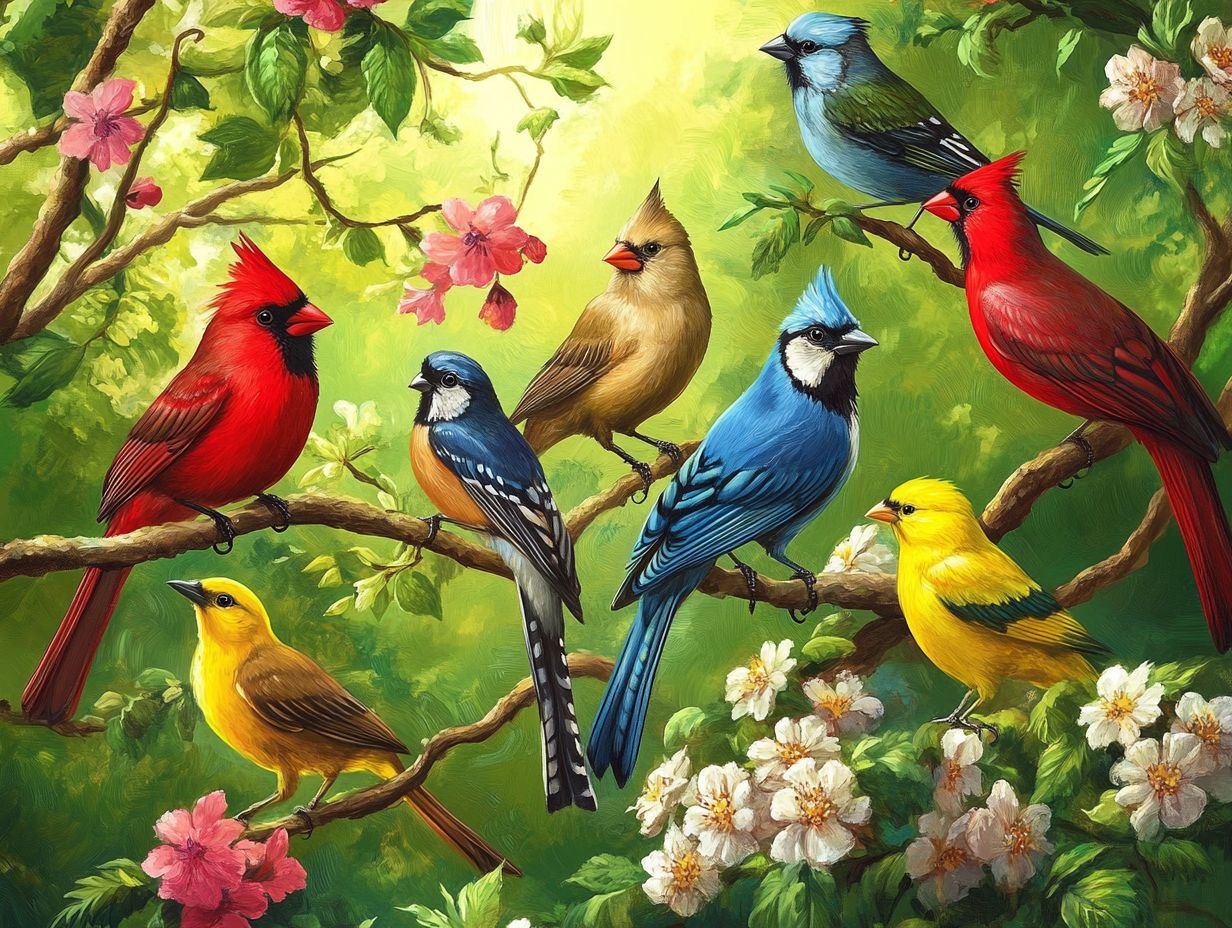
In spring, observe a delightful array of bird species, including the vibrant American goldfinch, the striking Northern cardinal, and the enchanting Ruby-throated hummingbird. Each brings its own splash of color and unique behavior to your local birding spots.
The American goldfinch, with its bright yellow plumage, is a true delight. Known for its cheerful song, you ll often spot it flitting among thistles and sunflowers, particularly in open fields and suburban gardens during its breeding season from late spring to early summer.
The Northern cardinal stands out with its bold red feathers and distinctive crest. This bird favors shrubby areas and woodlands, filling the air with its melodic calls that resonate beautifully across the landscape.
And let’s not forget the Ruby-throated hummingbird, famous for its shiny, colorful throat. It s irresistibly drawn to nectar-rich flowers, creating a mesmerizing spectacle for those patient enough to watch its rapid movements.
Local birders suggest heading out early in the morning during this season, as that s when these feathered wonders are most active and vocal. It s the perfect time to immerse yourself in the joy of birdwatching.
Common Birds in Summer
In the summer, immerse yourself in the vibrant world of birdwatching, where a diverse array of common birds awaits your discovery. Picture the Dark-eyed Junco and Blue Jay, resplendent in their summer plumage, energetically defending their nesting territories and foraging amidst lush avian habitats.
This season bursts with life, offering an adventure waiting for you!
Keep your eyes peeled for House sparrows, Carolina chickadees, Mourning doves, and the majestic Red-tailed hawks, all showcasing their distinctive summer behaviors and interactions.
This season is alive with captivating displays. House sparrows often nest in cozy, sheltered spots, frequently near human structures, and their diet consists mainly of seeds and discarded food.
Carolina chickadees are the friendly neighbors of the bird world, preferring wooded areas where they can forage for insects and seeds. Mourning doves, with their gentle, soothing coos, choose open spaces for nesting, often settling in bushes or trees.
Then, there are the magnificent Red-tailed hawks, soaring gracefully overhead as they hunt small mammals with remarkable precision.
Summer birdwatching is a fun pastime that deepens your appreciation for seasonal changes in bird behavior.
Common Birds in Fall
Fall presents a pivotal moment for you as a birdwatcher. During this time, numerous species embark on their journey to wintering grounds, offering breathtaking displays of vibrant plumage and captivating behaviors that are distinct to this transitional season.
Each sighting becomes a testament to the beauty and complexity of nature, inviting you to immerse yourself fully in this enchanting period.
Bird Species to Look Out For
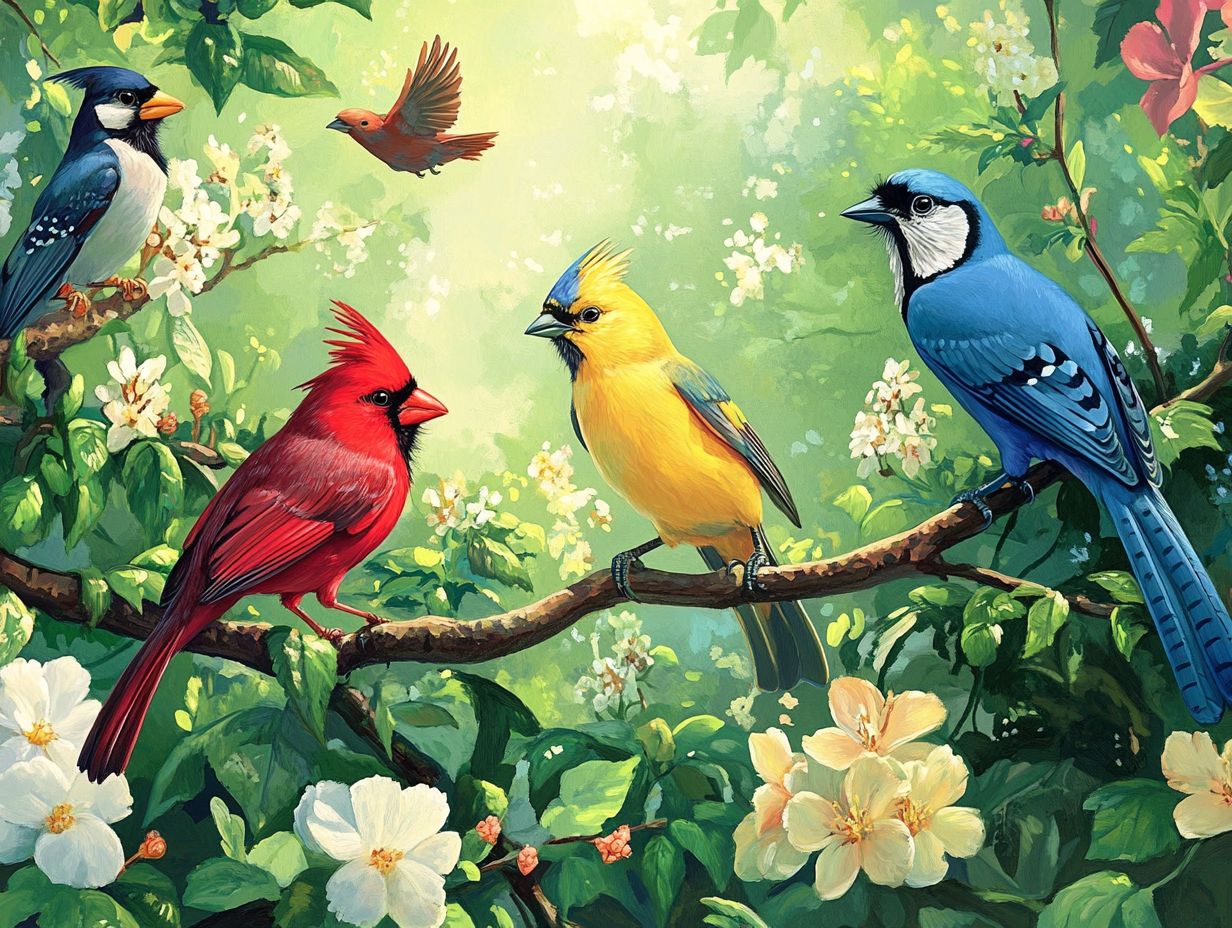
During fall, you can anticipate the arrival of migratory wonders like the Sandhill Crane and Great Blue Heron. You’ll also spot the ever-familiar Yellow-rumped Warbler as they prepare for seasonal journeys.
As the days grow shorter and temperatures dip, Sandhill Cranes gather in flocks, creating a vibrant chorus of calls. Their distinctive trumpeting calls accompany elaborate mating rituals as they forage for food in wetlands, often seen in groups fueling up for long flights south.
Meanwhile, you can spot the Great Blue Heron patiently stalking through shallow waters, showcasing its stealth in pursuit of fish. The Yellow-rumped Warbler flits through trees, foraging for insects and berries, providing delightful spectacles for birdwatchers.
To truly experience these bird species, remain quiet and patient. Position yourself near feeding grounds or watering spots during the magical hours of dawn or dusk when the birds are most active.
Common Birds in Winter
In winter, the landscape reveals captivating scenes for birdwatchers. As the chill sets in, many birds flock to backyard feeders. Look for the vibrant House Finch and the charming Dark-eyed Junco making frequent appearances.
Some birds also embark on remarkable journeys to their wintering grounds. This offers you unique opportunities for observation and discovery.
Bird Species to Look Out For
During winter, embrace a rewarding birdwatching experience by searching for species like the American Robin, White-winged Dove, and Common Loon. Each bird exhibits fascinating winter behaviors and unique adaptations to the colder climate.
These bird species often gravitate toward specific habitats that provide essential resources for survival, including food and shelter. For instance, American Robins diligently forage for berries tucked within dense shrubs and trees.
White-winged Doves thrive in urban environments where food sources are plentiful. In contrast, the Common Loon favors larger bodies of water that remain unfrozen, allowing it to hunt for fish with ease.
To enhance your chances of spotting these species, dress warmly, bring along your binoculars, and scout locations near food sources. Look for berry-laden trees or open water where these birds might gather. Keep an eye on weather patterns as milder days lead to increased bird activity.
Frequently Asked Questions
What Birds Can I Expect to See This Season?
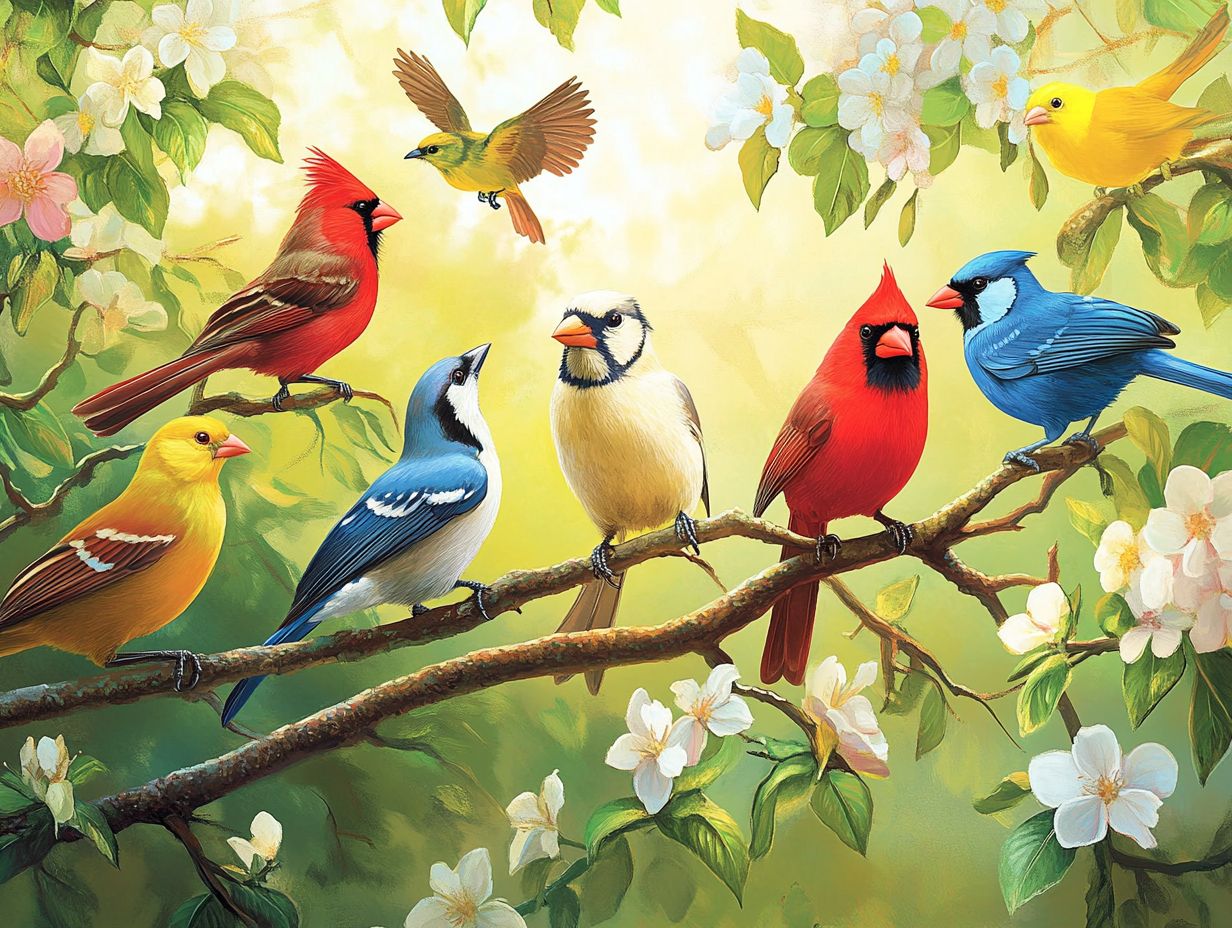
This season, expect to see a variety of birds depending on your location and their migration patterns.
What Types of Birds Are Common to See During This Season?
Common birds include robins, blue jays, chickadees, and cardinals.
Where Is the Best Place to Go Birdwatching During This Season?
The best places for birdwatching are areas with diverse habitats, such as parks, wetlands, and nature reserves.
Are There Any Rare or Unique Birds I Can Expect to See This Season?
Depending on your location, you may have the chance to see rare birds like snow geese, bald eagles, or sandhill cranes.
How Can I Attract More Birds to My Backyard During This Season?
Attract more birds to your backyard now! Use bird feeders with a variety of seeds, suet, and berries.
Do Bird Populations Change During This Season?
Yes, bird populations may change due to migration patterns, weather conditions, and food availability. Some species may be more active and visible during this season compared to others.
Start your birdwatching journey today! Explore your local parks and enjoy the beauty of nature.

